2022 Summer Research Fellowships
Summer Research Fellowships provide summer support to doctoral students so they may focus exclusively on their dissertation research. The Summer Research Fellowship is intended to enable students to complete their degree more quickly and supports students who normally do not have funding during the summer. Thanks to many private donors, 28 graduate students are spending this summer focusing exclusively on their dissertation research. The students were selected for the quality of their work, their readiness to productively use the time this summer, and their mentors' willingness to work with them and provide guidance.
We’re pleased to present 28 Summer Research Fellowships for 2022 — and to share the honorees’ own descriptions of their research.
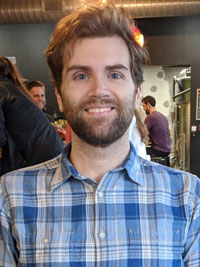
Andrew Adair
Mathematics
“My dissertation studies the braid group. A mathematical braid generalizes the conventional notion of braided strings. A braid group then collects all of the braids on a fixed number of strings together; for example, we have the "braid group on four strands," consisting of all braids created from four strings. More specifically, I study the braid group via its representations. Most basically, a representation of the braid group turns each braid into a matrix of numbers. The interactions of these matrices, which we generally understand very well, can then tell us pieces of information about the braid group itself.
My dissertation project, simply put, will define and study two new collections of braid group representations. In general, we are motivated to study braid groups because they describe symmetries of physical systems: for example, researchers have utilized braid groups when studying fluid dynamics and quantum computing, among other fields. My results should be useful as directly applied to the study of braids and their applications, but my primary motivation derives from the connection between braids and knots. Mathematical knots, like braids, generalize a conventional notion. Knot theory, meanwhile, seeks to answer the fundamental question: when are two knots different? Historically, braid group representations have been useful tools for distinguishing different knots; I hope my work may lead to developments in knot theory along these same lines. ”
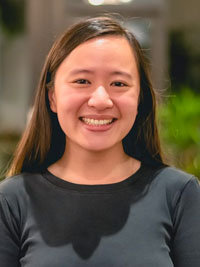
Sophie Bao-Chieu To
Health Behavior
“Guided by critical race theory and social identity theory, my research will explore, through oral history interviews, how Asian American comedians in the United States South have combated racism through their art during the COVID-19 pandemic. I seek to understand how Asian American identity and Southern identity (or Southern residence) converge to shape conceptions and experiences of racism, and how these ideas manifest in comedy, an art form that serves multiple social purposes in times of crisis.
This project would have several implications. First, it could reveal Asian American Southerners’ perceptions and experiences of racism during a crisis where our race is a foregrounded social identity. That could then inform local initiatives to combat anti-Asian racism and support Asian American health and well-being. Second, this research would document ways in which Asian Americans have combated racism over the past few years, as well as illuminate ways in which Asian Americans can support other communities of color and unlearn white supremacy in our own communities. Such documentation is significant as Asian Americans have faced a long history of erasure from social movements and discussions of race. Third, this research would contribute to a growing call in the public health field to integrate art into antiracism efforts, and to use art to reimagine possibilities and paths forward. Lastly, this work could reveal ways that humor can be wielded in the future to fight racism. ”
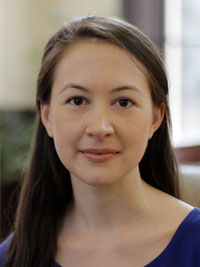
Anna Broadwell-Gulde
English and Comparative Literature
“Lamenting the limitations of his profession, 18th century portraitist Joshua Reynolds wrote, “the habits of my profession unluckily extend to the consideration of so much only of character as lies on the surface.” Painting before the invention of the first camera, which would push the human portraitist into further obsolescence, Reynolds also bemoaned the painter’s inability to move past exteriors. As it happens, his lamentation of the portrait’s limitations in capturing character arises precisely with the historical emergence of the novel. Two centuries later, when the novel was perhaps at the height of its commitment to characterological depth, modernist novelists strangely incorporate portraits as a critical component of narrative.
My dissertation, “Visual Portraiture as Formal Resistance: The Resurrection of Narrative Time in the Modernist Novel,” examines the influence of portraiture—painting and photographic—on narrative representations of consciousness during the early 20th century. In readings of “The Portrait of a Lady,” “To the Lighthouse,” “Absalom, Absalom!” and “Voyage in the Dark,” I argue that visual media is deployed both to rescue these novels from atemporal chaos and to produce characters that are, at times, unreachable—in other words, realistic. Despite relying on portraits for the production of authentic character, these novels also challenge—and sometimes reject—the painterly or photographic capacity for realistically capturing an individual in order to bolster the novel’s own narrative project. ”
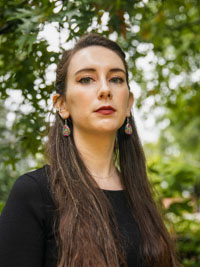
Kylie Broderick
History
“Between the 1910s and the 1930s, women-oriented magazines and periodicals in Greater Syria exploded in popularity. Women who founded, edited, contributed to, and read these magazines, mostly of the urban middle class, were attempting to both construct the ultimate ideal of “modern women” and to also understand how their overarching society—beginning to be envisioned as a nation—would function through the lens of a collectively-defined women’s role. Modernity for these women often centered explicitly on capitalism, attempting to give “work” occurring both within and outside the home new meaning. This debate distinctively shaped the class conceptions, aesthetics and anxieties in Greater Syria, embedded within a discrete generational moment.
Taking account of various publications’ perspectives and relevant secondary literature, this paper will deconstruct these debates with an eye to explaining how they were uniquely generative. I argue that the debates in women’s magazines were productive of new lines of thought which were not linearly replicative of present “Western,” “Eastern” or local schemas, but rather often pulled selectively from all three in order to craft their own visions of what it meant to be a modern woman in Bilad al-Sham. ”
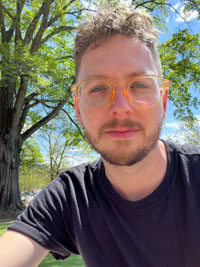
Parker Brookie
Romance Studies
“In my dissertation, I look at 21st century literature and film from Brazil and the Southern Cone region of Spanish America—Argentina, Chile, Paraguay and Uruguay—that revisit the period of dictatorship lasting roughly from the 1960s until the 1980s. I situate my research in Latin American dictatorship and gender studies by addressing overlooked issues related to gender violence that question the timeline of dictatorship, an event often centered in human rights discussions.
Through close readings, I examine how women’s and queer literature expose violence against racially and gendered marginal groups that, in turn, question the idea that state violence ended with the end of military regimes and return to democracy in ways that I call queering dictatorship. I use the term queer to group ways in which authors and filmmakers, through stories of those marginalized on the basis of gender, question conceptual "binaries" about dictatorship such as the binary of past versus present, hero versus anti-hero and individual versus collective memory. ”
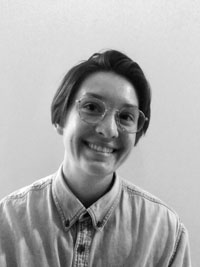
Devin Case-Ruchala
Political Science
“Governments around the world face the threat of increasing economic disruptions resulting from global systemic crises such as the COVID-19 pandemic and climate change. Myriad policy tools exist to help smooth these disruptions. One such tool re-emerging in public and policy discourse is public banks, such as in the recent passing of the California Public Banking Act in 2019 and the United Kingdom’s Green Investment Bank (2012) and British Business Bank (2014). My dissertation examines why governments pursue public banking to varying degrees. I introduce a conceptual framework for defining and identifying “public banks,” and I develop an original dataset that includes more than1,200 banks, 191 countries, and spans the period 1401-2020.
Using this data set, I demonstrate the origins of public banks in 15th century Western Europe and their diffusion along with state and market expansion to other regions beginning in the 1800s. I argue that persistent public bank formation is strongest in the 20th century under certain political-economic conditions of post-colonial state-building. Outside of these contexts, barriers to public bank formation are higher in absence of exogenous shocks creating political-economic pressures and demands (such as in the U.S. and U.K. in recent decades). This research challenges old assumptions and opens new pathways in a forward-looking research agenda on public banking as one possible policy tool to address the growing economic precarities and necessities of the 21st century.”

Courtney Chaaban
Human Movement Science
“Tearing the anterior cruciate ligament of the knee, known as the ACL, is a devasting injury. It is estimated that 200,000 individuals tear their ACL in the United States each year, costing over $1 billion annually. Adolescents have the highest rate of ACL injury amongst any age group. Adolescents also lack access to many resources available to collegiate and professional athletes. These factors contribute to a disproportionally high rate of negative outcomes in adolescents after ACL reconstructive surgery (ACLr), including secondary ACL injury, poorer self-reported function, decreased activity level across the lifespan and joint disease.
My research aims to augment rehabilitation in adolescents after ACLr by using low-cost tools that can be implemented in clinical settings where adolescents receive care. The first goal of my project is to induce cognitive loads that replicate those present during sport and injury. The second goal of my project is to measure knee biomechanical loading in a clinically feasible manner. The third goal of my project is to modify knee biomechanics during landing by implementing a novel feedback intervention. My project leverages inertial sensors, machine learning, and light sensors, each of which can be integrated into clinical settings at low cost. ”
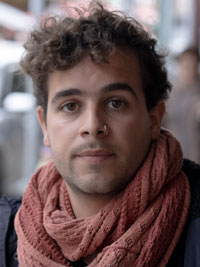
Nicolás de la Cerda
Political Science
“Party systems in Latin America have often been characterized as unstable and volatile. These are political environments where parties are short-lived and electoral success is not only elusive but wander unpredictably across party lines. This general characteristic of Latin American party systems had led scholars to believe that psychological identities, such as partisan identities which focus on identification with political parties, do not play a strong role in shaping political behavior in the region. However, this characterization is in stark contrast with the way in which day-to-day politics is experienced in Latin America. In fact, strong and pervasive political identities are common across the region. Movements formed around charismatic figures such Juan Perón in Argentina, Alberto Fujimori in Peru, Álvaro Uribe in Colombia and Hugo Chávez in Venezuela have been remarkably enduring, capable of structuring the political space, and forming political identities. Moreover, ideological labels such as “left,” “right,” and “center,” play an essential role organizing political competition in countries such as Chile and Uruguay.
In my dissertation, I argue that by focusing exclusively on partisan identities, a particular type of political identity, current research not only portrays the Latin American political landscape inaccurately, but also misunderstands key political dynamics and processes. In contrast, I advance a broader understanding of political identities and study three types of political attachments: charismatic (leader-based), ideological (left/right/center) and partisan. Using cross-national observational and experimental data, my research shows that certain often ignored political identities, particularly charismatic and ideological identities, are not only prevalent, but they also play a key role shaping information processing and political behavior in the region. More broadly, I highlight that the relative prevalence and influence of different political identities is related to the particular characteristics of party systems across the world.”
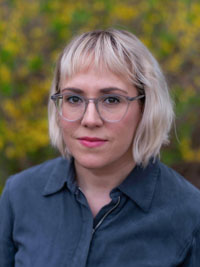
Erin Dickey
Art History
“My dissertation explores the convergence of networked technologies and feminist art in the 1980s. In an era of rapid technological change, the pioneering and understudied work of Judy Malloy, Nancy Paterson, and Karen O'Rourke probed the political and aesthetic processes underlying the "information age," scrutinizing not just what but how we know. In this decade, the proliferation of personal computing coincided with deregulation in financial and telecommunications sectors, Cold War nuclear anxieties and a seemingly foreclosed set of political possibilities for art. Linked by a shared feminist politics and collaborations with intersecting digital arts communities, these artists used databases, electronic messaging, live video transmission and other tools to destabilize common associations of technology with spectacle and efficiency. Their installations and interactive artworks—some online well before the first web page—imagined more equitable modes of knowledge production.
Working in an arena that was male-dominated even as it was marginalized in relation to the mainstream art world of the 1980s, these artists investigated the invisible authority and popular prestige of science and technology. Important precursors to current art practices, their visionary work anticipated later approaches to computer-mediated perception. My study both analyzes the material histories of the focus artworks and contextualizes them within the burgeoning information economy of the 1980s. Essential to a fuller history of contemporary American art, this project is also relevant to the history, sociology and philosophy of technology.”
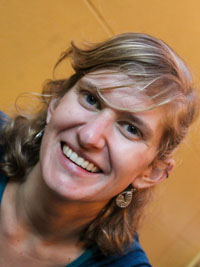
Michelle Dromgold-Sermen
Sociology
“My mixed-methods dissertation investigates the pathway to legal permanent residence for temporary migrants in the United States on visas. Becoming a legal permanent resident and obtaining a “green card” constitutes an important stage of membership, belonging, and citizenship for immigrants in the United States. However, the experiences of temporary immigrants with visas have been understudied, even as temporary immigration has increased in response to limited opportunities for permanent legal immigration. Given this context, my dissertation questions: How do temporary immigrants navigate their journey to permanence, and what are the strategies, costs and consequences that emerge along the way? In my dissertation’s three independent papers, I examine the ways in which (1) stalled, incohesive and shifting immigration policies, (2) bureaucratic waiting and uncertainty in immigration processing, and (3) legal family tenets of the U.S. immigration system shape temporary immigrants’ journey to permanent residence.
To examine how these three aspects of the U.S. immigration system shape immigrant experiences, I analyze forum threads and user processing timelines posted on an immigration website from 2007 to 2021 and conduct 100 interviews with temporary immigrants who are in the process of applying for permanent residence. My dissertation research will strengthen sociological understandings of how interactions with governmental systems shape immigrants’ membership, work, family and settlement decisions. Moreover, the findings have direct implications for immigration policymaking and bureaucratic administration.”
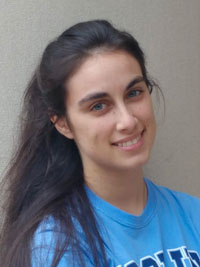
Michelle Freeman
Religious Studies
“I will be using this award to fund my travel to Philippi, Greece and Salona (Solin), Croatia, in order to visit and photograph the remains of late ancient Christian cemeteries located outside the walls of these ancient cities. Because my dissertation focuses on homilies preached on the feast days of martyrs from the 4th-6th centuries C.E., many of which were preached in extra-urban cemetery spaces, a firm understanding of these sites, their organization and their relationship to city centers is essential for my research. In addition to regular Christian burials, these sites contain the remains of martyr graves, around which late ancient Christians performed cult: prayer, privileged contact with martyrs’ relics and burial next to the martyrs. They offer evidence that late ancient urban bishops had to compete with the charismatic power of holy graves in these suburban and rural spaces.
By familiarizing myself with these cemeteries—and the multiple cultic, sacred spaces that marked the late ancient Christian landscape—in which bishops preached their homilies on the martyrs, I hope to reevaluate scholarly claims that bishops universally sought to centralize and control the cult of martyrs in late antiquity. Instead, I hope to demonstrate a cooperative negotiation of ritual space and practice between Christian preachers and their audiences in these extra-mural cemeteries.”
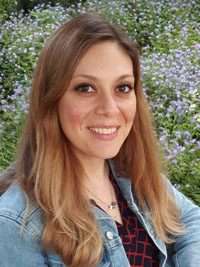
Giuseppina Gemboni
Romance Studies
“My research focuses on the representation of space and place in what has been called “direct postcolonial literature.” Direct postcolonial literature identifies the cultural production of authors who come from, or whose families come from, former Italian colonies in Africa. The distinctiveness of this corpus of texts lies in the fact that it unveils issues of Italian society that many white Italians tend to ignore, such as structural racism, colorism, sexism, violence against migrants and people of color, citizenship discrimination, and identity. However, while for these authors Italian colonialism represents an intergenerational trauma, in Italy it has been suppressed from public discourse for a long time, and when addressed, it has been whitewashed.
My work explores the ways postcolonial writers represent and recontextualize various places and spaces, both in Italy and in former Italian colonies in Africa, to reappropriate a discursive space, promote a process of decolonization and help redefine the Italian canon. Through a constellation of methodologies, including postcolonial studies, cultural studies, gender studies and an intersectional approach, my aim is to show how, by engaging with space and place, postcolonial cultural production questions Italian colonial past and creates debate around long misplaced and marginalized subjects and historical events.”
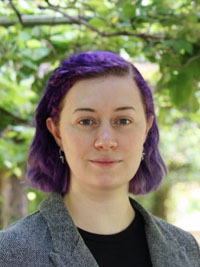
Eleanor Griggs
English and Comparative Literature
“My dissertation investigates how medieval literature represents underground spaces. The late Middle Ages was an era in which mineral resources were increasingly exploited, resulting in more frequent contact between humans and the subterranean. At the same time, the growth of universities saw a rise in intellectual speculation about the natural world. I argue that this growing body of geological knowledge is reflected in the literature of the time period. Writers depicted underground spaces in literary works to weigh in on contemporary debates concerning what might lie beneath the ground. Literary texts depict the subterranean as home to hell, purgatory, the relics of saints or previous kings, the realm of fairies, or the classical underworld of the Greco-Roman gods. Each of these ideas came with a set of unique geological and cosmological questions about the natural history of the earth and the place of humans within the cosmos.
My dissertation uses both literary and scholastic sources to illustrate the intersection and intellectual traffic between science and literature. I argue that these medieval depictions of subterranean spaces indicate an emerging sense of geology and archeology, with both mineral and physical evidence providing the material for speculation about the history of the Earth.”

Yanran Guo
Economics
“What are the effects of raising income tax rates on the top 1% of earners? My research addresses this question in an environment where top earners are commonly entrepreneurs. The literature typically focuses on the extensive margin by examining how tax changes affect entrepreneurs' entry and exit decisions. However, changes to the top income tax rate may also affect entrepreneurs' decisions about the growth of their businesses. I construct a model incorporating firm growth path and quantify the effects of income tax changes.
My work deepens the understanding of how income tax changes affect the aggregate economy through the lens of entrepreneurship and firm dynamics. Moreover, I also investigate the diverging effects of higher tax rates on workers and entrepreneurs at different income levels and calculate the optimal top income tax rate that maximizes social welfare. Therefore, my research has important policy implications.”
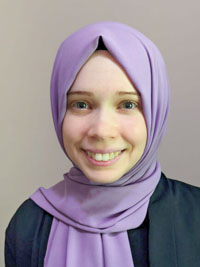
Lily Herbert
Geography
“Documentation of bias-motivated harm is critical for informing sustainable solutions to violence against marginalized people. Yet the most comprehensive hate crime data in the United States—the Federal Bureau of Investigation’s (FBI) statistics—is collected voluntarily by law enforcement agencies, 38% of which did not participate in the FBI’s data collection in 2020. Moreover, for enforcement, the legal category of hate crime relies upon state actors known to disproportionately harm racialized minorities. My research aims to understand how racism, local conditions, and national legacies of violence impact both hate crime data and proposed alternatives for addressing violence against marginalized people. I will assess potential relationships between structural racism and gaps in hate crime data. I will then examine recent discourse from grassroots organizations that have questioned whether more policing is the solution for anti-Asian violence.
Many have echoed the calls of police and prison abolitionists, who argue that harm must instead be eliminated through prevention of root causes. My research results will illuminate how structural racism may impact the FBI’s data and alternatives for documenting and addressing violence against marginalized people. My work will build a foundation for understanding how these alternative frameworks are connected to, are influenced by and vary across different places and scales. I will thus connect current conversations on hate crime and abolition, contributing insight that will inform localized, community-responsive solutions to violence against marginalized people. ”

Kellen Kane
Public Policy
“Queerness is political in the United States. Yet, despite the queer liberation movement igniting many political and policy gains for the lesbian, gay, bisexual, transgender and queer+ (LGBTQ+) community, LGBTQ+ individuals are underrepresented in policies, political institutions and policy research. In my three-essay dissertation, I study how LGBTQ+ identities and populations interact with state politics and policy: from the design and implementation of health policy, to the efficacy of antipoverty policies, to representation in state legislatures. My interdisciplinary dissertation makes theoretical, methodological, and policy-oriented contributions to our understanding of social policy, health policy, and queer politics in the U.S.
In the first dissertation essay, I study the implementation of Part B of the Ryan White Comprehensive AIDS Resources Emergency Act, a federal grant program intended to provide medical care to low-income people living with HIV/AIDS. In the second dissertation essay, I explore the health effects derived from Earned Income Tax Credits (EITCs), one of the most lauded anti-poverty policies in the United States, for LGBTQ+ recipients. Despite being reputed as a ‘policy silver bullet’ for addressing poverty by policymakers and scholars alike, to date, no study examines the effectiveness of EITCs for LGBTQ+ populations who experience disproportionate rates and unique determinants of poverty. In the final dissertation essay, I study the characteristics of state legislative districts where LGBTQ+ politicians win elections, creating a measure of queer friendliness. ”
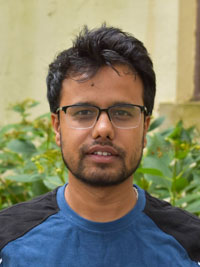
Kshitiz Khanal
City and Regional Planning
“Although benchmarking policies in buildings have shown some effectiveness and promise, such policies are relatively new. The long-term effectiveness of these policies is not conclusively shown as most analyses available in literature are preliminary. A more rigorous analysis of impact of various benchmarking policies and how they compare across various cities is missing. In addition, commercial buildings vary widely in terms of use and attributes. While it is expected that the policies have different impacts based on these attributes, these differential impacts have not been quantified in the literature. Developments in causal machine learning makes it possible to identify and group buildings into clusters for which impact of benchmarking is similar. This helps policymakers target benchmarking to building types for which the return on investment would be higher. An analysis of variables that influence the effectiveness of benchmarking more than others and use of explainable machine learning principles can be used to understand the mechanisms through which benchmarking helps reduce energy use intensity.
I will explore how benchmarking policies affect buildings with different properties differently by estimating heterogenous treatment effects using a causal machine learning model named “Causal Forest.” An analysis of variable importance will reveal building features that contribute the most to the policy effect. The study further aims to provide policy recommendations on benchmarking policy formulation and implementations based on the analyses.”
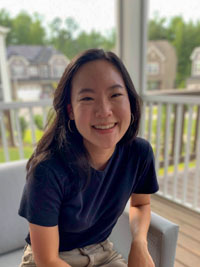
Seh-Joo Kwon
Psychology and Neuroscience
“Adolescence is a remarkable window of development characterized by drastic social, biological and behavioral transformations. One such change is an uptick in risky behaviors, however, there are some risks that are worth taking. First, risky behaviors may be adaptive, for risky behaviors can offer opportunities for exploration and learning. Second, risky behaviors are often vicarious, for risky behaviors can impact individuals beyond oneself. My integrative dissertation of three studies seeks to understand the development of adaptive vicarious risk-taking and neurobiological changes that support this development. In a five-wave longitudinal functional magnetic resonance imaging (fMRI) study, 173 adolescent participants completed a risky decision-making task in a fMRI scanner where they made risky decisions to win money for themselves, their parent, and their best friend.
First, I will examine how adolescents take adaptive risks for two incredibly salient social agents (their parent and best friend) across time. Next, I will test how yearly changes in adolescents’ best friend selection link to adaptive risk-taking for their best friend. Lastly, I will explore how adaptive risk-taking for oneself longitudinally informs adaptive risk-taking for their parent. Results from my integrative dissertation will identify neural markers of strategic social behaviors and have implications for how adolescents successfully interact with others. That is, optimally taking risks for others may allow adolescents to navigate their ever-growing social world and meet new social needs.”

Kaitlyn Morrell
Physics and Astronomy
“Quantum mechanics is an integral part of how we understand the physical world. Not only did its discovery change our views of the microscopic laws of matter, it also led to the electronic computer revolution and ushered in the new era of quantum computing. Presently, the quantum many-body problem is at the forefront of theoretical research, where the goal of understanding systems of numerous quantum particles is common to astro-, nuclear and condensed matter physicists. Quantum systems, though, are extremely complicated to model due to their probabilistic nature. Methods to tackle this problem are therefore in high demand and those proposed so far fall into two extreme categories: analytic and numeric.
My research bridges the two by teaching computers to handle lengthy analytic formulas rather than working with them on paper, a method we call algebra automation. These are then evaluated using numerical algorithms. Over the past few years, I collaborated with other students to successfully apply a similar automated approach for the quantum virial expansion (QVE). Currently, I am leading the development of a new method designed to transcend the QVE. The significance of this new tool stems from its general applicability to a wide range of systems and situations. My focus will be on its application to neutron matter, which is relevant for astrophysics, but generalizations of the method to other systems and situations will also be explored.”
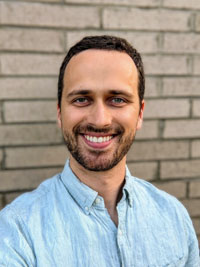
Taylor Petty
Statistics and Operations Research
“Next-generation sequencing (NGS), first developed at the turn of the 20th century, provides a higher-resolution view of DNA mixtures processed from crime scenes than the current industry standard of capillary electrophoresis (CE), first developed in the 1960s and in use since the 1980s. New statistical methods are required in order to take advantage of this richer data type, and precision is of the essence since miscarriages of justice (false positives) and errors of impunity (false negatives) both have high social costs. We develop a similarity measure for gene sequences specifically adapted to regions of the genome used in forensic DNA testing. We use this metric to train a deconvolution algorithm on a mixture of persons using data from the National Institute of Standards and Technology.
One of our goals is to be able to use NGS data to provide likelihood ratios of whether DNA from a person of interest is in the DNA sample from the scene. Ongoing work includes determining whether any contributor from a known database is present in the mixture, as well as using Markov Chain Monte Carlo to more precisely deconvolve mixture proportions to determine whether a person of interest was present at a crime scene. Code has been and will continue to be made available open-source on GitHub. ”
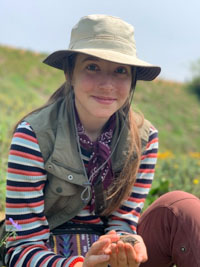
Emma Reinhardt
Biology
“The degree of variation present in birdsong can be astounding. While the use of male song in attracting females and repelling rivals is well-studied, there is much still unknown about the utility of within- and among-song variation. The Lincoln’s sparrow is a system my lab has studied since 2005, in part because these small birds are prolific singers. There is immense complexity within their songs and a high degree of variation between songs, making this species an ideal candidate for studying their mechanism of communication. After analyzing thousands of Lincoln’s sparrow songs, I have found a highly stereotyped internal arrangement of sounds within a song. Even songs performed by different males in different years appear to follow similar syntactical rules. This begs the question of how such a syntax evolved and its relevance in a sexual signal.
By exposing both females and males to songs with a disrupted syntax and examining their responses, I hope to gain insight into the salience of internal song variation in female preference and mate competition, and potentially even in species recognition. Investigating the evolutionary forces shaping syntax in birdsong will elevate our understanding of the myriad ways in which non-human animals communicate and may even have implications in demystifying the evolution of language in humans.”
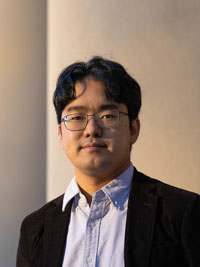
Eduardo Sato
Music
“During the first half of the 20th century, Brazilian music was an object of scrutiny in Brazil and elsewhere. The disputes that swirled around the meanings of Brazilian music formed part of the process of emancipation from the nation’s colonial and imperial pasts, as musicians and intellectuals built the country’s cultural foundation. They addressed, among other things, the citizenship of composers and performers, the styles and genres derived from vernacular music of the territory, and the racial, gendered and ethnic constructs of its population. My dissertation examines this process through a transnational lens, exploring how Brazilian music was recurrently negotiated in the context of transatlantic travels by following the routes of travelers who listened, performed, recorded, and wrote about music and sounds.
By examining border crossings from multiple perspectives—those of Brazilians traveling elsewhere as well as Europeans and North Americans visiting Brazil—I intervene in current discussions of travel, cultural circulations and transnational flow which delves into many tumultuous geopolitical situations both in Brazil and abroad, such as the Estado Novo and both world wars. I draw on extensive archival research as a practice of what I call “writing from the border,” a strategy aimed at disrupting colonial and national hegemonic systems of narrating history.”
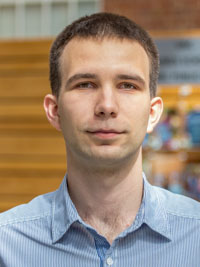
Misha Shvets
Computer Science
“During the last decade we have witnessed rapid advances in computer vision. Visual pattern recognition models came close or exceeded human capabilities, creating a shortcut between academic research and industrial applications. We are already benefiting from the advanced computer vision systems in healthcare, retail, agriculture, transportation, and other sectors. Computer vision models are in the vast majority represented with deep neural networks. Provided with a visual input (image, video sequence, 3D scan) a neural network learns high-level representations that are used to interpret these input signals. For example, in object detection, the network starts searching low-level patterns between groups of pixels, and gradually combines those to develop rich representations that define objects in the scene. Thus, provided with an image, a good detector can localize and classify all objects of interest in the scene (people, pets, furniture items, etc.).
My research focuses on improving implicit representations of computer vision neural networks. This improvement can be achieved in several ways. First, we combine different modalities inside one model that provides richer and more robust supervision. Second, we design mechanisms for relation reasoning between frames in video sequences to boost the model’s performance in each video frame. Finally, we propose ways to make models predict outputs in scenarios of limited supervision.”
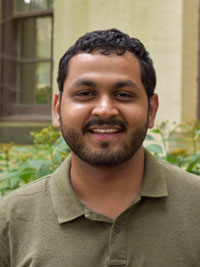
Saumitra Sinha
City and Regional Planning
“In 2013, the Delhi government adopted a “free water policy” according to which water connections that show water usage of less than 20 m3 per month are not issued a water bill. While this popular policy benefits more than 1.4 million households, many intended recipients, particularly low-income households, could be excluded from the subsidy scheme and on the contrary, end up paying a higher bill. In the Global South, a popular method of targeting water subsidies is to base benefits on usage, under the assumption that poorer households use less water. In tariff structures like the increasing block tariff (IBT), households that use more water pay a higher price per cubic meter. IBTs sometimes include a limited quantity of free water available to households that have low usage.
However, scholars have found that these types of subsidies don’t work because many low-income households have bigger household sizes or share water connections, resulting in them falling into a group that pays higher price per cubic meter of water. Renter-occupied households don’t pay the utility and have a variety of different agreements with the landlords for paying for water. Over the summer of 2022, I will try to understand the different types of water payment arrangements renters with shared connections have with their landlords in order to gauge if they pay a fair price for water. ”
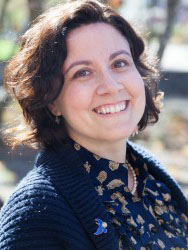
Francesca Sorbara
Anthropology
“My research investigates how environmental laws and policies emerging in Colombia are changing the lives of peasant settlers' communities living across the borders of national parks on one of the Amazon region's leading agricultural and deforestation frontiers. In 2018, Colombia's Supreme Court declared the Amazon an "entity subject of rights" to curb forest exploitation and destruction. This new legislation, known as Rights of Nature (RoN), has been increasingly enacted in several countries with diverse approaches and outcomes. In Colombia, the RoN is raising debates and even tensions among human rights defenders, state officials and local communities. My research is grounded in the empirical investigation of the RoN's impact on specific human communities and ecosystems. I ask two main questions: How are two peasant settler communities in the north-western Amazon of Colombia transforming their livelihoods and territories amid changing environmental policies? How, if at all, is "the Amazon subject of rights" ruling slowing down deforestation?
To answer these questions, I carry out ethnographic research using participant observation, in-depth interviews, life stories, and participatory mapping in the Guaviare region of Colombia. My project contextualizes and challenges mainstream assumptions around the “Rights of Nature" environmental conservation paradigm emerging globally. My research also investigates how these laws and policies affect the environmental subjectivities of local communities that inhabit and shape the changing landscapes of the Amazon region. My work dialogues with recent scholarly contributions in feminist political ecology, political anthropology, and the anthropology of human rights.”
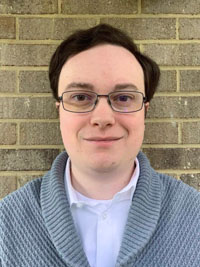
John West
Psychology and Neuroscience
“Given the important consequences that emotional memories can have in contexts such as mental illness and eyewitness testimony, memory researchers have long been interested in studying how individuals remember emotional events. Even so, such research has tended to investigate the mnemonic effects of emotion on average, without considering how individuals might differ in their emotional memories. Importantly, because certain theoretical perspectives regarding emotions such as psychological constructionism emphasize individual variability as being a fundamental aspect of emotional experience, such perspectives naturally generate hypotheses about memory which remain untested.
To address this gap in the literature, my dissertation will investigate the mnemonic effects of an individual difference variable central to constructionist theories: emotional granularity, or the extent to which individuals experience different emotions as highly differentiated and specific as opposed to relatively similar and interchangeable. Because highly granular individuals are thought to be “emotion experts,” I predict that such individuals will be better able to remember emotional events as compared to less granular individuals. By testing this hypothesis, I aim to expand upon prior research by offering a more person-centered approach to the study of emotional memory. Additionally, this study will be the first to test the validity of hypotheses generated from emotional theories such as constructionism within the novel context of memory research.”
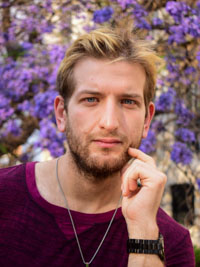
Pavlos Zoubouloglou
Statistics and Operations Research
“Differential equations are, in mathematics, objects that seek to associate the rate with which a function changes (derivatives) with the function itself. Yet differential equations are deterministic and can therefore not model problems with randomness. This remark led to the development of Stochastic Differential Equations (SDEs), which admit as solutions stochastic processes. My work starts with a particular coupled dynamical system of SDEs: namely, the solution of two SDEs such that at any given time, the position of one SDE affects the future trajectory of the other. A peculiarity of this system is that the two SDE’s run on different scales of time, so that one of the SDE’s is much “slower” than the other one. Such multiscale systems have been used to model various physical phenomena where components evolve at different rates, e.g. climate-weather interactions in ecology.
Consider now a collection of such systems of SDEs, such that the difference in the speed between the “fast” and the “slow” component can get arbitrarily large. Then, it is reasonable to question what a typical behavior for the “slow” system looks like. A branch of probability theory, referred to as Large Deviations Principles (or LDPs), attempts to identify the rate with which rare events occur, that is the rate with which certain trajectories of a diffusion will materialize. My work is to develop a LDP for the “slow” SDE in the aforementioned multiscale system of SDEs.”

Andrea Zurek-Ost
Anthropology
“My research applies a combination of bioarcheological and geochemical methods to the archaeological record to elucidate the intersections between transience and health in the past. Specifically, this research focuses on a subterranean cemetery structure in the village of Roncesvalles (Navarre, Spain) which has long served as a waystation for those crossing the Pyrenees. This crossroads is linked with both the religious pilgrimage route the Camino de Santiago and its associated commercial economy, and with several military campaigns.
Recent archaeological investigations undertaken in partnership with the local community indicate that throughout the centuries, the town’s cemetery has served as a repository for the remains of both non-local religious pilgrims and soldiers. This biocultural research is rooted in the principle that the experiences of transient individuals, including their biological, social and ecological worlds, are embodied, resulting in physical alterations to the skeleton. Many of these are related to health synergistically, such as diet and nutrition, skeletal stress, and skeletal trauma. The daily practices associated with transience, either for religious reasons or as a byproduct of warfare, can influence overall skeletal health. The identification of non-local individuals in the Roncesvalles cemetery, their treatment in death and a study of how, and to what extent, their experiences of transience are inscribed on their skeletal remains, will ultimately contribute to our understandings of transience, for both pilgrimage and war, in the past. ”
